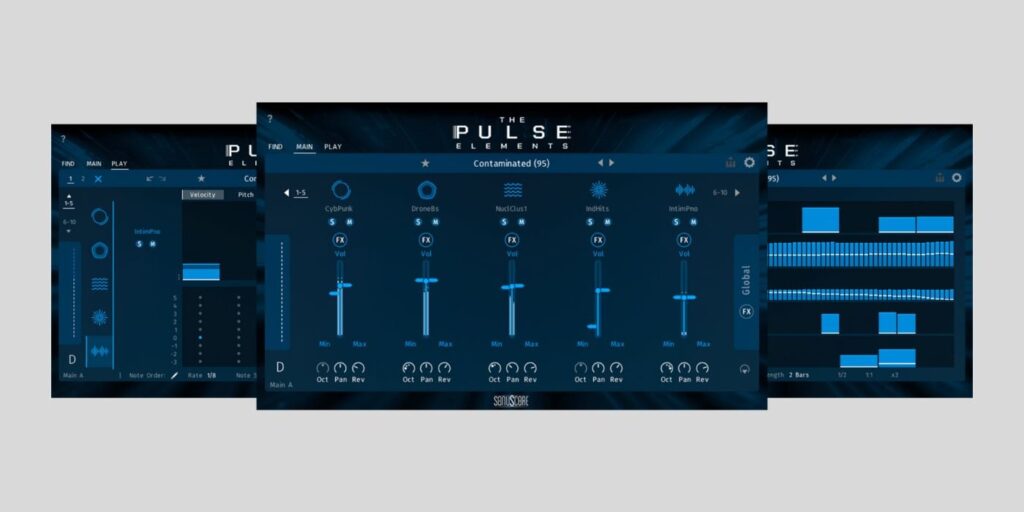Sonuscore releases The Pulse Elements, a FREE cinematic ensemble instrument for Kontakt Player
The Pulse Elements is a free, trimmed-down version of Sonuscore’s premium cinematic Kontakt instrument (The Pulse).
Downloading The Pulse Elements is relatively quick and painless, but you’ll have to install Native Access if you don’t already have it and register your serial number there.
If you’re new to Native Access, you’ll need a free account; you can’t log in with your Sonuscore details (so potentially two signups for some).
The Pulse Elements works in the free Kontakt Player, but if you’re looking for free cinematic sounds elsewhere, check out Venus Theory’s auras:altis for Decent Sampler.
Sonuscore calls The Pulse Elements a synth-based instrument for film, TV, and game composers, and that’s a fair description. While it might be most valuable to media composers, it offers something to anyone making various types of electronic music.
The Pulse Elements showcases the heart of Sonuscore’s synth engine, seamlessly combining rhythm, harmony, and melody.
The instrument provides eight Sessions (presets): three Cinematic, three Modern Genre, and two Ensemble.
The Cinematic and Ensemble Sessions are my favorites, and provide lots of tension and release, but the Modern Genre Sessions make The Pulse Elements appealing to a broader audience.
Each Session has up to ten elements that create a complete melodic, harmonic, and percussive ensemble, including drum kits (acoustic, hybrid, and drum machines), bass, plucks, pads, leads, FX hits, and more.
You can solo or mute any element, and the individual sounds are generally excellent, especially the Retro pads, Dirty bass, and VHS plucks.
As individual elements, some sounds are great to play solo, but the appeal lies in the ensemble and its flexibility.
The basic adjustments, in addition to mutu/solo functions, start with the ability to replace each element with a new instrument to create a custom Session.
Each of the ten elements has a dedicated FX chain with four slots; the first slot is Attack/Release and a three-band EQ by default, with various modules available for the remaining slots.
Modules include a multi-mode Filter, Dynamics, Distortion, Delay, Reverb, and Modulation.
My favorite thing about the built-in FX is that you can link them to the mod wheel and set a start/end range. It reminds me of the Super Knob on the Yamaha Montage M8X; you can tweak multiple parameters on the fly from a single control.
The ability to define a range for each effect allows you to create contrast, with some slight movements, and others far more dramatic; it’s perfect for transitions in media composition.
There’s also a global FX section with LFOs to modulate FX slot sliders.
Once you get beyond the sound sources and FX, the Play page is where you can adjust arpeggiators, envelopes, velocity, pitch, randomness, and create custom sequences.
There are a few cool features here, including the ability to save your settings to a new keyswitch. Keyswitches let you introduce new layers with a single key, without any point-and-click interruptions to your flow.
Another feature I really like is the option to offset the pitch of each step, relative to the key pressed. Slight pitch variations can make a sequence sound more alive and keep it interesting without resorting to massive changes too soon.
In addition to pitch variations, you can adjust the Chance parameter per step, which is the probability of a particular step being played each time it comes around. I love the Chance parameter; it removes the feeling of a looped sequence and develops an organic feel.
There’s still more to explore with The Pulse Elements, like a Drum Rack with up to nine lanes, but despite not being as fully loaded as the paid version, it’s surprisingly customizable.
All in all, a fine freebie!
Download: The Pulse Elements (FREE – Native Access & Kontakt Player required)
More:
Last Updated on November 6, 2025 by Tomislav Zlatic.




